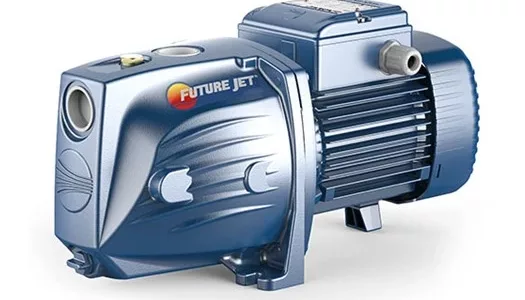What is priming?
Priming a centrifugal pump is the process of filling the pump’s casing with liquid before it starts operating. The purpose of priming is to ensure that the pump has sufficient liquid to prevent it from running dry and damaging the impeller and other internal components. It is essential to prime centrifugal pumps that need to be installed above the liquid level, such as in a lift station or a water tower.
The priming process involves filling the pump casing with liquid before starting the pump. This can be done manually, using a hose or a bucket, or automatically, using a priming system. Automatic priming systems are commonly used in large-scale applications, as these requires quick and efficient priming of the pump.
Once the pump casing is filled with liquid, the pump can be started, and it will begin to circulate the liquid. It’s essential to monitor the pump’s performance during the priming process to ensure that the pump is operating correctly.
Problems with improper priming
Proper priming is critical for ensuring the longevity and efficiency of a centrifugal pump. If a pump runs dry, the impeller can become damaged, leading to reduced performance and increased maintenance costs. In addition, dry-running causes overheating, causing significant damage to the pump’s components and resulting in a complete failure of the pump.
Self-priming pumps
Self-priming pumps eliminates the need for manual priming, being designed to prime themselves automatically. These pumps work by creating a partial vacuum within the pump casing that draws liquid into the pump and begins the circulation process.
The impeller (the rotating component of the pump), creates a flow of liquid that creates a low-pressure area in the suction pipe. This low pressure draws liquid into the pump casing, and the pump begins to circulate the liquid.
The liquid is then pumped out of the pump casing and into the discharge pipe, creating a high-pressure area. This high pressure helps to maintain the flow of liquid into the pump and ensures that the pump continues to circulate the liquid.
Self-priming pumps are designed to maintain their prime, even if the pump stops running for a short period. This means that the pump can be stopped and started again without the need for manual priming. This makes self-priming pumps a convenient option for applications that require frequent start and stop cycles.
Pedrollo FutureJet Self-Priming “Jet” Pump
At Overseas Motors, we highly recommend Pedrollo‘s FutureJet Range, which is able to double its capacity while maintaining the same pressure. All this while achieving a significant reduction in energy consumption of up to 50%. The FutureJet Range has an internationally filed patent FUTURE JET® Registered Trade Mark n° 018198453.
- High hydraulic efficiency
- Energy savings up to 50%
- Reduction of turbulence for a very stable operation of the pump
- A better power/flow ratio

